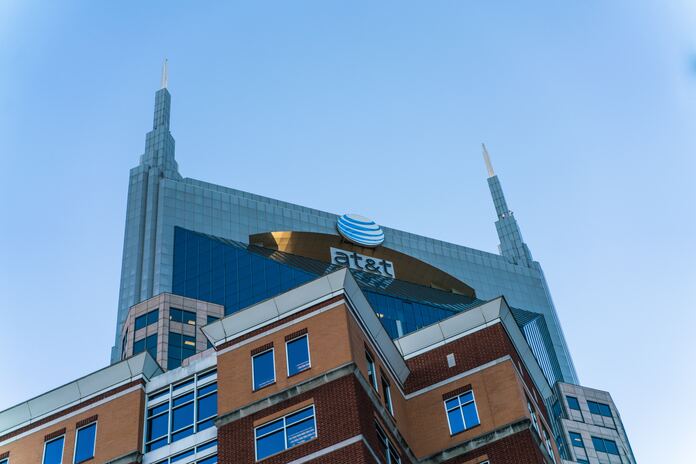AT&T Stock (NYSE:T)
Growth investments such as Nvidia (NASDAQ:NVDA) and Microsoft (NASDAQ:MSFT) can be exciting to hold and look at in a portfolio, but their high valuations provide little in terms of current income and reinvestment potential.
For example, NVDA currently yields 0.06%, which is so low that it might be called a non-dividend paying company at its current price, whereas MSFT currently yields 0.9%. This indicates that it would take 456 dividends to purchase only one share per quarter.
Many investors underestimate the significance of dividends, notwithstanding Warren Buffett’s success with Berkshire Hathaway (NYSE:BRK.B), through which he owns a number of dividend-paying companies.
This takes me to AT&T stock (NYSE:T), which is currently trading in deep value territory at $16.96 with a 6.5% dividend yield. In this post, I’ll explain why now might be a good moment to invest in this telecom giant.
Why Choose AT&T?
Let’s face it: AT&T has had a horrible reputation for poor capital allocation over the last decade. This is because management became dissatisfied with the stable profits from the telecom sector and wanted to go into a media field in which they had no prior experience.
While the current CEO, John Stankey, was a key executive during the doomed Time Warner merger, he wasn’t the one making all the decisions. He has returned the corporation to its telecom roots as CEO, divesting Time Warner and selling a share in the DirecTV business.
This simpler structure has allowed AT&T to focus capital on strengthening its core telecom business, which has resulted in sustained 5G and Fiber subscriber gains. This is reflected in the 424K postpaid phone net adds during the first quarter, which extends AT&T’s streak of 11 consecutive quarters with more than 400K net adds. Notably, client retention remains good, with a churn rate of only 0.81%, which is only 5 basis points more than the previous year’s period.
Importantly, AT&T’s fiber investments are bearing fruit, as the company is now the third largest owner of fiber assets in the United States, trailing only Comcast (NASDAQ:CMCSA) and Charter Communications (NASDAQ:CHTR). AT&T reported sustained strong growth in this area, with 272K net additions in Q1, marking the company’s 13th consecutive quarter with more than 200K net additions.
Domestic wireless service revenues increased by 5.2% year on year, while consumer broadband revenue increased by 7% year on year, driven by 31% rise in fiber revenue. AT&T observed increases in both the number of customers and the average revenue per user, as seen below.
Looking ahead, AT&T intends to more than double its accessible Fiber market to 30 million households by the end of 2025, up from its present capacity of 19.7 million households. AT&T’s fiber customers now outweigh its DSL users, and management expects fiber to be complementary to 5G, with 75% of its network footprint expected to be supplied by fiber and 5G. Fiber might also assist AT&T in selling wireless services to 4 million new residential users.
Furthermore, AT&T’s exodus from its legacy copper services footprint (which is more expensive to maintain) could help it boost margins, and management claimed that it is on track to generate more than $6 billion in run-rate cost savings by the end of the year. Process efficiencies, such as the use of AI to optimize fleet deployments so that field personnel can better service customers and connect customers to the correct support channel, are also expected to produce cost reductions.
Finally, while AT&T earned just $1 billion in free cash flow in the first quarter, management anticipates the year to be back-loaded and total $16 billion in FCF. This translates into an FCF-to-dividend payout ratio of 60.6%. This would also provide AT&T plenty of room to pay down debt, with management aiming for a net debt to EBITDA ratio of 2.5x by 2025.
Finally, AT&T stock is firmly in value territory at the present price of $16.96, having fallen from the $20 mark last month. It has a forward PE of only 6.98. At this low valuation, it might post low to mid-single-digit EPS growth while still providing considerable returns to investors.
Analysts have a consensus Buy recommendation and an average price target of $21.31, implying a possible 26% upside based only on capital appreciation, with the dividend providing a nice bonus on top of that.
Takeaway for Investors
In conclusion, AT&T stock is an excellent investment for investors hoping to capitalize on the 5G and Fiber rollouts that are taking place across the United States. It boasts robust subscriber growth, a high customer retention rate, and a clear path to margin expansion through cost savings. Furthermore, it is trading at a relatively cheap valuation with a 6.5% covered dividend yield, providing value investors with considerable income while they wait for future capital appreciation.
Featured Image: Unsplash @ Brendan Stephens









